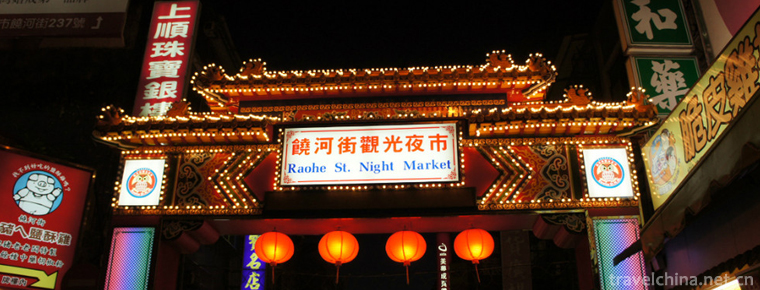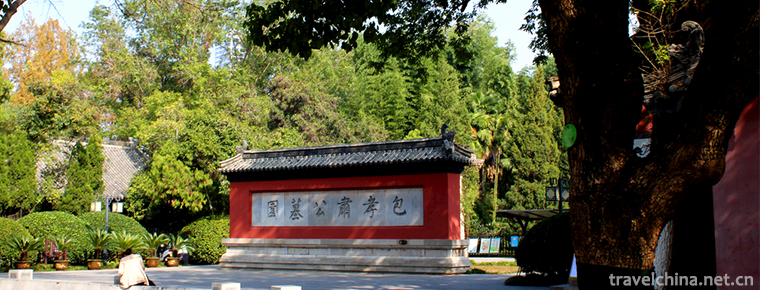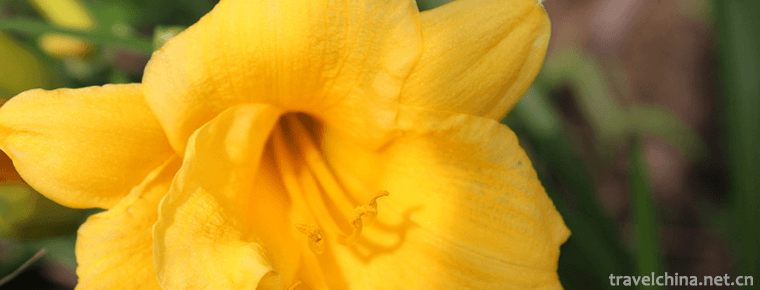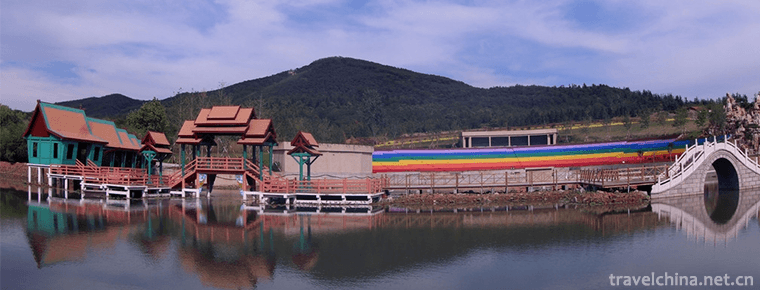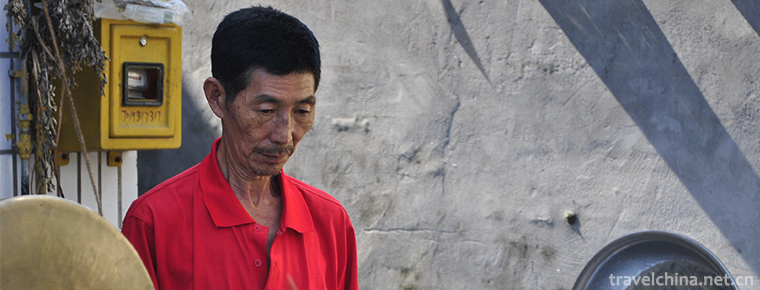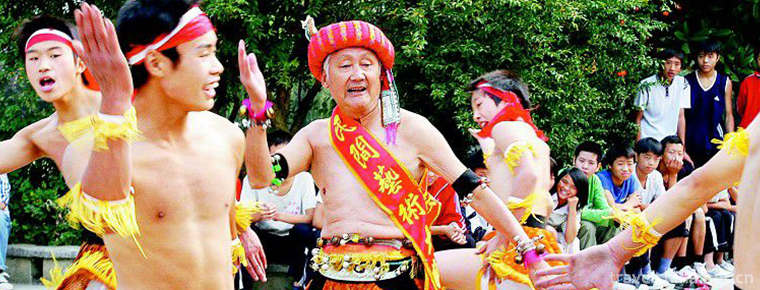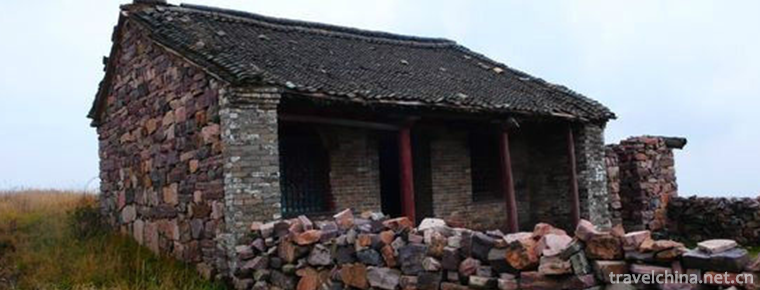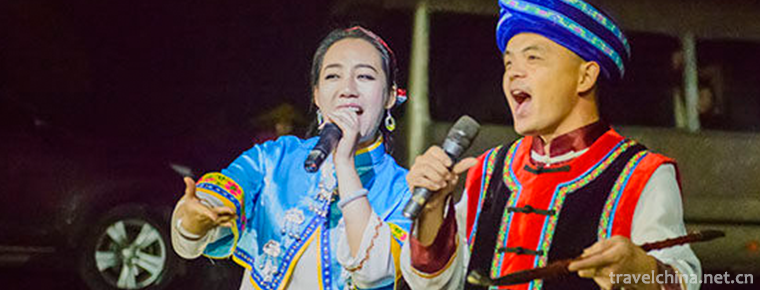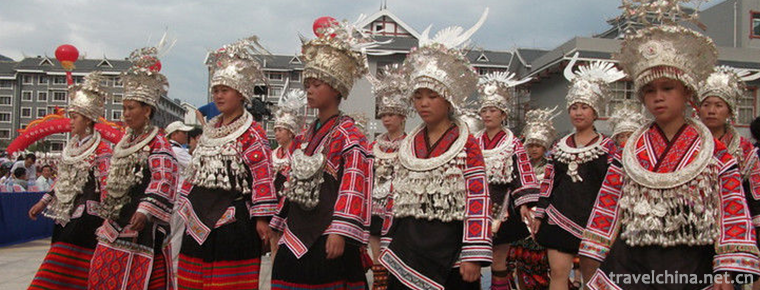Golden Gong dance of Yao nationality
Golden Gong dance of Yao nationality
Golden Gong dance is popular in the villages of Meilin and Pingliao of Dengyao Township in Tiandong County. It is a representative work of Bunuyao folk dance in Tiandong.
In November 2014, the Golden Gong dance of Yao nationality declared by Tiandong County of Guangxi Zhuang Autonomous Region was listed in the fourth batch of national intangible cultural heritage list with the approval of the State Council.
historical origin
Originated from the local Yao people to commemorate their ancestors and thank God of the mountain for the gift. In the old days, it was limited to the activities of rewarding gods, offering sacrifices and exorcising evil spirits. With the passage of time and the changes of time, Golden Gong dance gradually evolved into the main sacrificial dance for celebrating the Lunar New Year in Yaoshan. Every Spring Festival and May 29 of the lunar calendar, golden gong sounds in Yaozhai. People are crazy about singing and dancing. Golden Gong dancing is the main form of activity of emotional alleviation of Yao people, which reflects the whole process of production, life and emotion of local Yao people.
artistic characteristics
Golden Gong dances are mostly collective dances. The number of people can be three or five, or hundreds or thousands. When dancing, a vine or a rope is pulled up in the playground, and the Gong is strung up and hung up. The Gong can also be hung on a bamboo stand or a wooden bracket. The Gong is about 1.5 meters off the ground, so as not to hinder the movement. Because Yao people mostly live on high mountains, their long-term life and work in the mountains make them adapt to the natural environment. For example, when walking on rugged mountain roads, they must raise their feet, exert their toes, twist their waists and contain their breasts. This habit includes "raising their legs and striking gongs", "leaning on their feet and nodding gongs", "crossing their heads with hammers" and so on. "Double mallet backstroke" and "quick turning gong" are all embodied. The wild Gong dance shows the tension of life and the beauty of art. Now, Golden Gong dance is not only a cultural and recreational activity for farmers in the village, but also an indispensable reserved program for major festival activities in Tiandong County. Golden Gong dance is very popular in the local area. In Meilin village, where it originated, men, women, old and young can dance. It is a cultural phenomenon in Yaoshan, and also a popular folk dance program of Tiandong people.
Current situation of inheritance
In 1985, the dance was listed as a development project by the national key project group of art and science planning. In 1992, it was included in the "Guangxi Volume of the Integration of Chinese Ethnic and Folk Dances". In 2006, he participated in the first Baise traditional minority sports competition and won the second prize. Up to now, nearly 100 performances have been performed both inside and outside the county. In 2010, the Autonomous Region announced the list of important intangible cultural heritage projects, including the Yao Golden Gong dance and the Yao Suona in Tiandong. At present, Tiandong is applying for the Golden Gong dance of Yao nationality as an important item of the national intangible cultural heritage.
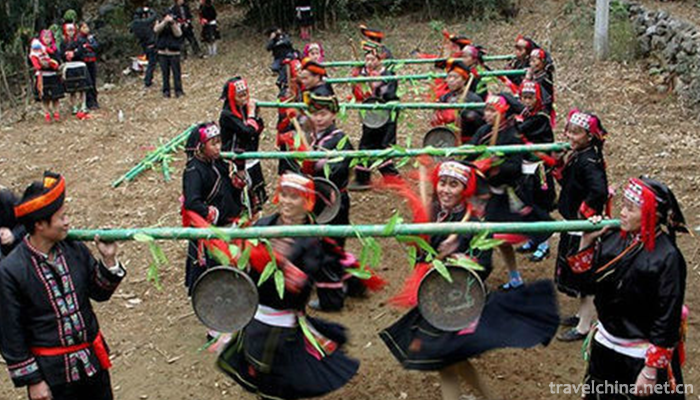
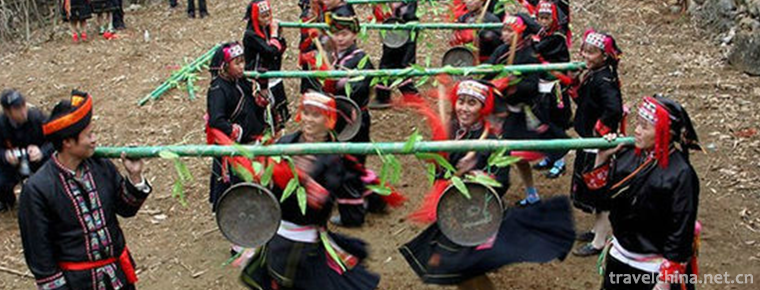
Golden Gong dance of Yao nationality
-
Raohe Street Night Market
Raohe Street Night Market is located in Raohe Street
Views: 517 Time 2018-10-12 -
Vinegar garden in East Lake
Donghu Vinegar Garden is located at No. 26 Madaobo between Dongshan Expressway and Jianbei Road in Taiyuan City. It covers an area of more than 20,000 square meters. Shanxi is most famous
Views: 148 Time 2018-12-20 -
Package Park
Baoyuan, or Baoyuan for short, is located at 72 Wuhu Road, Hefei City, Anhui Province. It was built in 1063, the seventh year of Jiayou in the Northern Song Dynasty. It was built in memory of Baozheng
Views: 425 Time 2018-12-26 -
Hainan Tropical Wildlife Park and Botanical Garden
Hainan Tropical Wildlife and Botanical Garden is a national AAAA-level tourist attraction with the theme of popular science exposition, conservation and reproduction, sightseeing, leisure and vacation
Views: 271 Time 2019-01-13 -
Tongguan Yellow River Scenic Area
Tongguan Yellow River Scenic Spot is located at the famous ancient military pass-Tongguan ancient city, 140 kilometers away from Xi'an, only 20 kilometers away from Huashan
Views: 110 Time 2019-02-22 -
Snow Mountain Rainbow Valley Scenic Area
Xueshan Rainbow Valley Scenic Area is located 3 kilometers east of Yishui County, Shandong Province. It mainly includes Snow Mountain, Dashan and Mashan, with a total area of 2 million square meters.
Views: 127 Time 2019-02-26 -
Liang Pings Gong and drum
Liangping Gong and drum is a kind of traditional folk instrumental music spread in Liangping District of Chongqing. In Liangping, the predecessors said that "Shu people Chao shan, gongs and drums
Views: 305 Time 2019-05-13 -
Meat rustles
"Meat Lianliang" refers to the native minority local dance variety in Lichuan City, Hubei Province, which takes the unique body performance as the main form. It is popular in the city's Duti
Views: 242 Time 2019-06-11 -
The Legend of Shun
Shun was born in Zhufeng Village, Yongji County. His surname is Yao and his name is Chonghua because of his double pupils. Soon after his mother gave birth, he died. His father married a stepmother an
Views: 139 Time 2019-06-16 -
Xinhua Folk Song
Xinhua Folk Song is a kind of traditional folk song mainly spread in Xinhua County, Loudi City, Hunan Province. Xinhua folk song has a wide range of contents, old style, unique style, simple rhyme, ch
Views: 171 Time 2019-07-06 -
Yangasha
Yangasha, an epic originating in Jianhe, Guizhou Province, is eulogized for Miao compatriots from generation to generation. It is a sad and elegant love story about a passionate Miao girl. It is the G
Views: 204 Time 2019-07-11
